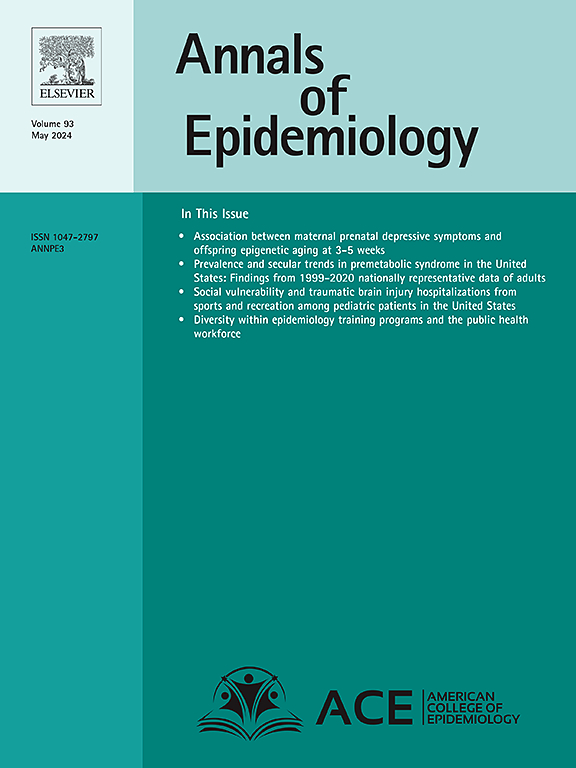Differences in all-cause mortality between urban and rural areas based on the intensity of long-term social isolation: Findings from 17-year retrospective cohort study
IF 3.3
3区 医学
Q1 PUBLIC, ENVIRONMENTAL & OCCUPATIONAL HEALTH
引用次数: 0
Abstract
Purpose
Social Isolation (SI) can lead to differentiated outcomes between urban and rural areas. However, the understanding of its impact remains insufficient. Therefore, this study aimed to identify the differences in mortality risk of SI Trajectories (SIT) between urban and rural areas.
Methods
This study included 6284 participants from the Korea Longitudinal Study of Aging. Propensity Score Matching was utilized to match the characteristics between urban and rural participants. Using Trajectory analysis, SIT was classified from 2006 to 2012, and the association with all-cause mortality was investigated through Cox-proportional hazard model from 2013 to 2022.
Results
Five SIT types were identified in both urban and rural areas. In urban areas, Ascending (Hazard Ratio [HR]: 1.89, p: 0.033), Mild (HR: 1.86, p: 0.013), and Severe SIT (HR: 2.58, p: 0.000) were significantly associated with all-cause mortality, whereas Descending SIT was not. In rural areas, Ascending (HR: 1.42, p: 0.035), Moderate (HR: 1.59, p: 0.005), and Severe SIT (HR: 1.67, p: 0.005) had higher HR Compared to Non-SIT. A stratified analysis showed a strong association in urban areas for males and those aged ≤ 64, and in rural areas for females and those aged ≥ 65.
Conclusion
Based on the differences in SIT between urban and rural areas, future policies should develop specific indicators for managing SI and create tailored regional policies to reduce mortality.
基于长期社会隔离强度的城乡地区全因死亡率差异:来自17年回顾性队列研究的结果
目的:社会隔离可能导致城市和农村地区的不同结果。然而,对其影响的了解仍然不足。因此,本研究旨在确定城市和农村地区SI轨迹(SIT)死亡风险的差异。方法本研究纳入韩国老龄化纵向研究的6284名参与者。采用倾向得分匹配法对城乡被试进行特征匹配。采用轨迹分析方法对2006 - 2012年的SIT进行分类,并通过cox -比例风险模型对2013 - 2022年的SIT与全因死亡率的关系进行研究。结果在城市和农村地区共鉴定出5种类型。在城市地区,上升型(危险比[HR]: 1.89, p: 0.033)、轻度(危险比[HR]: 1.86, p: 0.013)和重度(危险比:2.58,p: 0.000)与全因死亡率显著相关,而下降型(危险比]:2.58,p: 0.000)与全因死亡率显著相关。在农村地区,重度SIT (HR: 1.42, p: 0.035)、中度SIT (HR: 1.59, p: 0.005)和重度SIT (HR: 1.67, p: 0.005)的HR高于非SIT。一项分层分析显示,城市地区男性与年龄≤ 64岁者、农村地区女性与年龄≥ 65岁者有很强的相关性。结论基于城市和农村间SI的差异,未来的政策应制定管理SI的具体指标,并制定有针对性的区域政策以降低死亡率。
本文章由计算机程序翻译,如有差异,请以英文原文为准。
求助全文
约1分钟内获得全文
求助全文
来源期刊

Annals of Epidemiology
医学-公共卫生、环境卫生与职业卫生
CiteScore
7.40
自引率
1.80%
发文量
207
审稿时长
59 days
期刊介绍:
The journal emphasizes the application of epidemiologic methods to issues that affect the distribution and determinants of human illness in diverse contexts. Its primary focus is on chronic and acute conditions of diverse etiologies and of major importance to clinical medicine, public health, and health care delivery.
 求助内容:
求助内容: 应助结果提醒方式:
应助结果提醒方式:


